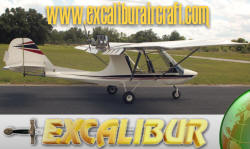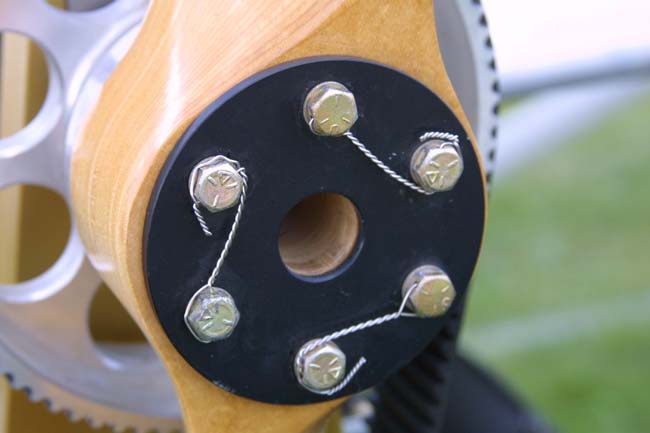|
All loose propellers have shown
signs of burning on the hub mounting face, sometimes accompanied
by bolt hole and/or counter bore elongation, indicating relative
motion between the propeller hub faces and contacting flanges.
Maintaining proper bolt torque is the most important
maintenance item for a wooden propeller. Loss of proper bolt
torque will result in the decrease or loss of hub compression and
thus the loss of drive friction between the propeller and mounting
hub face and the engine or spool drive flange.
At this point the
drive torque is transferred only by the propeller bolts and/or
flange drive bushing, which will then begin to elongate the bolt
holes and/or counterbores in the mounting face of the wooden
propeller and can cause cracking in the hub.
The propeller bolt
torque must be carefully applied and checked periodically in order
to maintain adequate hub compression. Do not torque above the
recommended levels as this will crush the wooden hub, breaking its
moisture seal and slightly reducing the drive-torque capacity of
the installation.
Propeller Bolt Torque Maintenance:
The main factor that leads to the loss of propeller bolt torque
is the variation of wood hub thickness with long term
environmental changes. Propeller bolt torque should be checked
according to the following schedule:
1. Stabilization Period – When installing a propeller,
check the propeller bolt torque after first flight, then recheck
every 10 hours OR 10 days, whichever comes first, until the torque
stabilizes. The torque should be completely removed and then re-torqued
to the recommended values using the pertinent installation
instructions.
2. After Stabilization Period – Once the propeller bolt
torque has stabilized, a torque check should be performed every 50
hours or annually.
3. Environment Changes – Should the operating
environment change significantly in temperature and/or humidity
for a long period of time, the propeller should undergo another
stabilization period.
Additional Installation Tips
Spinner or Spacer Installations: For propeller installations
that use spinner bulkheads or spacers mounted in-between the
propeller and mounting flange, ensure that both faces,
bulkheads/spacer, are smooth and clean.
Testing has found that painted surfaces provide the greatest
drive friction and larger safety margin if hub compression is not
maintained.
Installation Hardware: Ensure that all threads on propeller
attaching bolts, lock nuts or drive bushings (where applicable)
are clean and dry. Any lubricants on the threads can result in
over-tightening and possible crushing of the wood hub.
Wood propellers have been installed on hundreds of thousands or
aircraft over the years with excellent service histories.
Following the maintenance procedures above will help ensure safe
operation of your wooden propeller.
|


